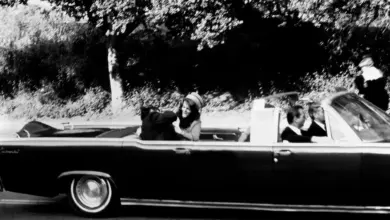The Vikings are a name that echoes in the mists and shadows of Europe’s medieval past. These seafaring Norse Warriors from the rugged North left an indelible impression on Europe between the 8th and the 11th centuries. The Vikings looted monasteries and terrorised coastal villages. They also sailed rivers into foreign lands. The Vikings were everywhere, in the fjords and hills of Norway, on the icy Baltic, or the warm Mediterranean. They were feared, revered, and misunderstood.
While history will remember the Vikings for their brutality and pillaging (a myth in itself), their legacy is richer and more complex. Was the Vikings a bloodthirsty band of marauders or more? Did their lasting impact come from something more — a unique combination of seafaring expertise, tactical ingenuity and craftsmanship, as well as an iron-willed, steely spirit?
We must travel back through centuries and coasts to the heart of Viking culture.

The Geography that Forged a Warrior’s People: Secrets of the Viking Warriors
The Viking tale begins in Scandinavia, a region formed by elemental forces. The vast pine forests of Norway, Sweden and Denmark today, with their jagged mountain ranges and deep fjords, created beauty as well as hardship. The winters were long and the summers short. The farmland was scarce, and the survival of farmers required resilience, collaboration, and ingenuity.
The difficult terrain was a major factor in the formation of Viking society. Norse communities, whose land was unsuitable for agriculture on a large scale, turned to the sea. Trading, fishing, and, ultimately, raiding were not only ways of life, but also a means to expand.
Imagine a Viking settlement on the windswept western coast of Norway. The icy Atlantic crashes into the rocky shore. Longhouses with turf roofs curl smoke. Iron tools are forged by skilled hands beside hearths, and children are taught how to row before they are even able to walk. The Viking lifestyle was a rugged, yet deeply communal way of living, with a focus on kinship, honour, and mastery of the natural world.
This environment produced people who were not only shaped by geography but also inspired by it, explorers, warriors and survivors.
More Than Raiders – The Strategic Genius of Viking Warfare
The term “Vikings” may conjure up images of bloodied swords and burning villages. However, their military successes were not purely due to brute force. The Vikings were tactical, and their raids displayed careful planning and strategic deception.
What is their preferred attack method? Surprise and speed. The coastal settlements, especially monasteries, were selected for their vulnerability. The raid on Lindisfarne, 793 AD, on the north-east coast of England, was not only violent but also swift. The monks had little time to react. The monks barely had time to react. This marked the beginning of the Viking Age.
These were not aimless thugs. They knew their targets. They waited and watched before striking with surgical precision. Viking warbands avoided major military encounters. The Vikings preferred to use river-based attacks and hit-and-run raids to avoid traditional defences.
In 845, they laid siege to Paris by sailing up the Seine in France. They navigated vast river networks in Russia and established trade routes, even reaching Constantinople. They founded cities such as Dublin in Ireland. These were originally fortified Norse villages.
Every raid was based on a deep understanding of the terrain, timing and terror, a kind of psychological warfare that amplified their impact.
The Longship Advantage: A Naval Supremacy
The longship was the secret weapon that allowed the Vikings to become a pan-European force. It was sleek, shallow-drafted, fast and light enough to carry overland, if needed.
The longship, made by skilled shipbuilders from oak, pine and spruce in Scandinavia’s fjords and coastal forests and inlets, was more than just a means of transportation. It was a technical marvel. Its shallow hull made it possible to navigate narrow rivers, while its flexible frame was able to withstand the unpredictable sea conditions.
Longships could transport dozens of warriors and still maneuver with amazing agility. The Vikings were not at the mercy weather because of their dual propulsion – wind-powered sails, and manually rowed Oars. Its symmetrical bows and sterns allowed quick direction changes, which enabled fast escapes in the event of an emergency.
The Vikings sailed across the North Atlantic centuries before Columbus. They travelled from Iceland all the way to Greenland and even to the interior. The longship was not just a weapon of war; it was also a bridge that connected two worlds.

The Warrior Code – Strength, Honour and Reputation
The mentality of Viking warriors was what set them apart. This code of culture emphasised courage, loyalty and honour.
In Norse culture, the concept “drengskapr – roughly translated as “manly virtue” – defined how a soldier should live and die. Cowardice, on the other hand, was despised. In Valhalla – the mythical hall of fallen warriors, ruled by Odin – glory in battle was celebrated and seen as a way to eternal life.
Viking combat was infused with a spiritual intensity by this belief. To die in combat was not the end but rather a way to achieve greatness. This is what drove them to fight with such ferocity and fearlessness.
From a very young age, they were trained in fighting, weapons and survival. They formed tight-knit warbands and often swore blood oaths of loyalty. While the axe is a popular symbol, Vikings used swords, shields and spears as well. These weapons were all made with precision by local blacksmiths. Each weapon was a symbol of the owner’s pride and status.
Warriors were not all male. Some sagas or archaeological findings suggest that Shieldmaidens were female warriors who fought alongside males. This belief, whether myth or fact, reflects a culture that valued courage and strength over rigid gender roles.
More than just Warriors: Craftsmanship, culture and more
The Vikings were not only warriors, but also master traders, storytellers, and craftsmen. The Vikings’ culture was rich in oral poetry, artistic expression and technological skills.
The runes were their system of writing and were used to communicate, commemorate, and for spiritual purposes. The Saga literature preserved in Iceland centuries later immortalised legendary warriors and gods. These tales, full of adventure, tragedy and moral lessons, provided entertainment and education to Viking society.
Viking artists created detailed ship figures, intricate jewellery, woven fabrics, and carved wood art. While their homes were simple, they were constructed with care. They used turf to insulate them and central hearths to heat them. Silk from the East was traded, as were silver and spices from the Islamic world.
As traders, Vikings were both shrewd & versatile. They raided monasteries, but also created vibrant markets and traded in slaves and furs. They also facilitated trade across continents.
Legacy: Beyond Blood and Fire
What is the legacy of the Viking warriors?
They brought destruction. Their raids did indeed reshape medieval Europe. They also challenged empires and founded cities.
The Danelaw region in England was heavily influenced by Viking culture, including language, laws, and customs. Norse settlers in Scotland intermarried with Gaelic locals to create rich hybrid cultures on the Hebrides, Orkneys and Shetland. The Varangians, as they were called in Russia, helped lay the foundations for the Kievan Rus’. They created the Althing in Iceland – one of the oldest democratic parliaments still existing.
The Vikings’ influence is still felt today. Norse deities are honoured in English by days such as Thursday (“Thor’s Day”) and other English words. Modern DNA studies have shown that Viking ancestry can be found in Britain and Northern Europe. In our collective imagination, Viking warriors remain a symbol of power and strength, but also independence, exploration, endurance, and endurance.
Modern Echoes – Reassessing the Viking Past
Archaeology and DNA analysis have helped to fill in the gaps of Viking history. Now we know that Viking expeditions often included more than just warriors. They were both settlers and raiders. They built towns in Iceland and governed democratically. Their mythologies, legends, and stories have been influencing fantasy and fiction for centuries.
The Vikings’ brutal image is not completely false, but incomplete.
Yes, they were fierce. They were dreamers, builders, navigators and poets. They lived in a physical and mental world that required resilience.

Conclusion: Warriors of Wind and Wave
They are not only found in the bloodshed of Viking warriors. The secrets of the Viking warriors are not hidden in bloodshed alone.
The sharp clang on the anvil of the blacksmith… the calm determination of people carved out of cold stone and salt spray.
Understanding the Vikings means understanding a culture that thrived, not despite its hardships but because of them. People who used geography as a tool, not as an obstacle. A society that channelled its warrior spirit into connection, not just conquest.
Next time you hear “Viking,” try to think beyond battle cries. Imagine the wind in their sails. Their courage. From the frozen north to history books around the world, their legacy is a testament.
They were not monsters. These were people of their time, flawed, brilliant and brutal. Their story is not over.




